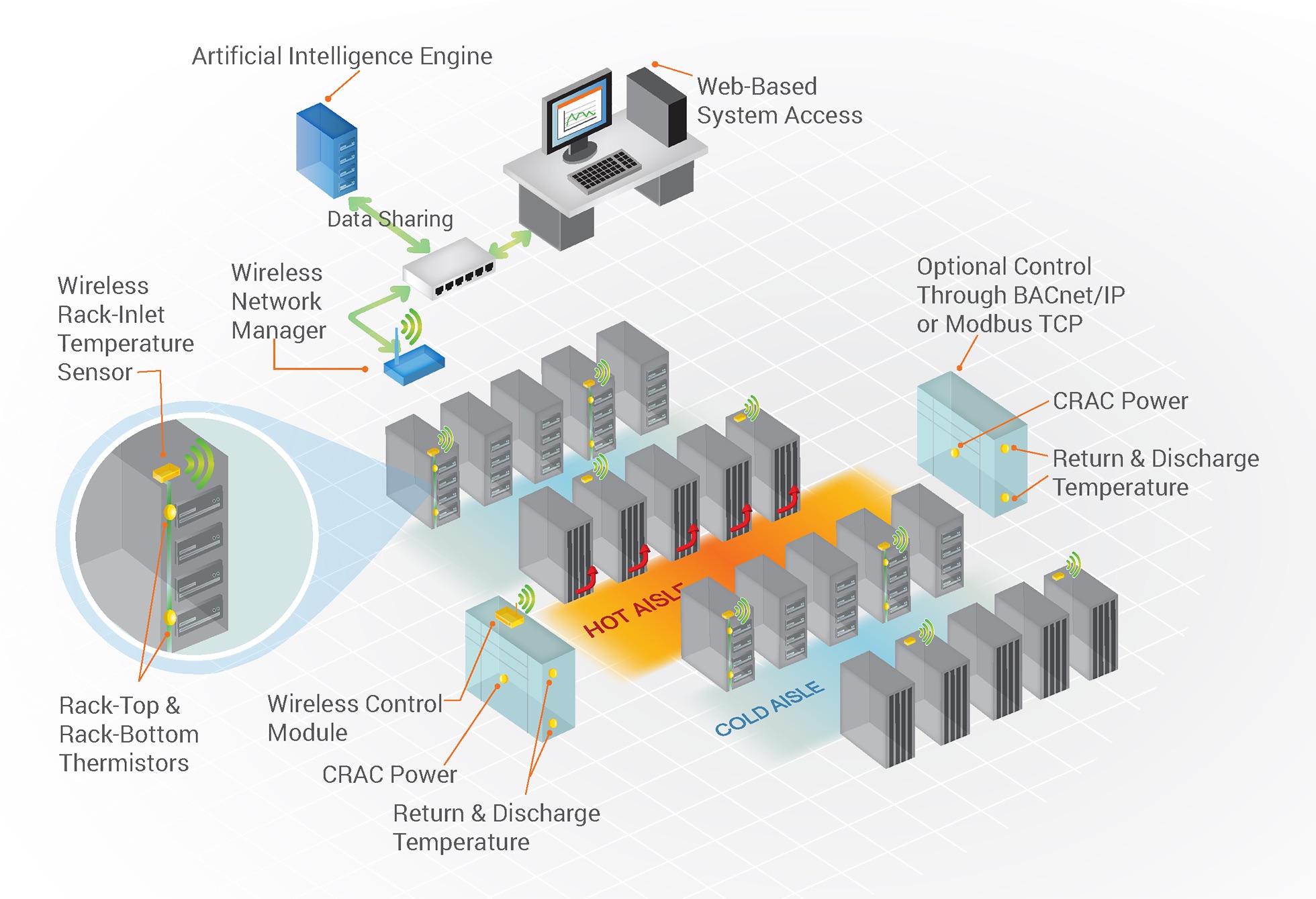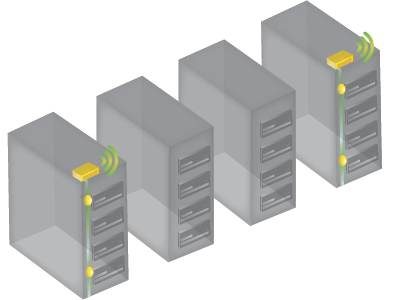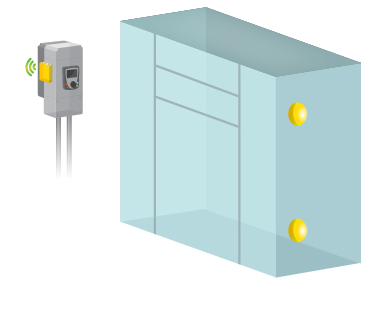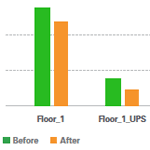System Architecture
Closed-loop control manages your cooling infrastructure.
The Vigilent Dynamic Cooling Management® System is designed from the ground up to meet the most demanding requirements of mission critical facilities. It deploys quickly and with minimal to no interruption to ongoing operations or tenants. And its components are fine-tuned to work together to deliver optimum cooling efficiency while dramatically saving on energy costs.

System components
Here’s a look at the key components of the system and their roles in creating a comprehensive approach to cooling optimization.

Wireless Sensors
Wireless sensors are typically deployed every third rack to measure the inlet air temperature every minute. The sensors have two thermistors, one to capture temperature at rack bottom, the other at rack top.
Wireless sensors are also used to monitor return and supply air temperature, and the power consumed, by each cooling unit. Sensors are also available to measure other environmental conditions, namely pressure and humidity.
The sensors are based on advanced mesh networking technology, which allows each node to be both a source and repeater for other nodes, allowing the network to automatically self-configure and be resilient to intermittent outages or changes in site layout.

Network Manager
Data from the wireless sensors is distributed over the mesh network, and aggregated by one or more network managers. A network manager can typically accommodate 100 sensors, subject to the layout of the facility. Each network manager is then connected via Ethernet to the same network as the AI Engine, to which it delivers data and from which it receives commands.

AI Engine
The AI Engine is the brain of the Vigilent system. This appliance runs the algorithms that analyze the real-time data against current and historic trends to optimize the system to achieve the best temperature results with the least amount of energy. It then sends those control decisions back out to the network manager, which delivers them to the Wireless Control Modules.

Control Module
As directed by the AI Engine, the control module can turn cooling units on or off, or adjust fan speeds, to ensure the perfect facility temperature using the smallest amount of energy. As those changes are implemented, the temperature sensors gather new temperature data, and the cycle continues again.



